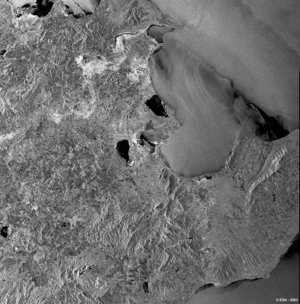Accept all cookies Accept only essential cookies See our Cookie Notice

About ESA
The European Space Agency (ESA) is Europe’s gateway to space. Its mission is to shape the development of Europe’s space capability and ensure that investment in space continues to deliver benefits to the citizens of Europe and the world.
Highlights
ESA - United space in Europe
This is ESA ESA facts Member States & Cooperating States Funding Director General Top management For Member State Delegations European vision European Space Policy ESA & EU Space Councils Responsibility & Sustainability Annual Report Calendar of meetings Corporate newsEstablishments & sites
ESA Headquarters ESA ESTEC ESA ESOC ESA ESRIN ESA EAC ESA ESAC Europe's Spaceport ESA ESEC ESA ECSAT Brussels Office Washington OfficeWorking with ESA
Business with ESA ESA Commercialisation Gateway Law at ESA Careers Cyber resilience at ESA IT at ESA Newsroom Partnerships Merchandising Licence Education Open Space Innovation Platform Integrity and Reporting Administrative Tribunal Health and SafetyMore about ESA
History ESA Historical Archives Exhibitions Publications Art & Culture ESA Merchandise Kids Diversity ESA Brand Centre ESA ChampionsLatest
Space in Member States
Find out more about space activities in our 23 Member States, and understand how ESA works together with their national agencies, institutions and organisations.
Science & Exploration
Exploring our Solar System and unlocking the secrets of the Universe
Go to topicAstronauts
Missions
Juice Euclid Webb Solar Orbiter BepiColombo Gaia ExoMars Cheops Exoplanet missions More missionsActivities
International Space Station Orion service module Gateway Concordia Caves & Pangaea BenefitsLatest
Space Safety
Protecting life and infrastructure on Earth and in orbit
Go to topicAsteroids
Asteroids and Planetary Defence Asteroid danger explained Flyeye telescope: asteroid detection Hera mission: asteroid deflection Near-Earth Object Coordination CentreSpace junk
About space debris Space debris by the numbers Space Environment Report In space refuelling, refurbishing and removingSafety from space
Clean Space ecodesign Zero Debris Technologies Space for Earth Supporting Sustainable DevelopmentApplications
Using space to benefit citizens and meet future challenges on Earth
Go to topicObserving the Earth
Observing the Earth Future EO Copernicus Meteorology Space for our climate Satellite missionsCommercialisation
ESA Commercialisation Gateway Open Space Innovation Platform Business Incubation ESA Space SolutionsEnabling & Support
Making space accessible and developing the technologies for the future
Go to topicBuilding missions
Space Engineering and Technology Test centre Laboratories Concurrent Design Facility Preparing for the future Shaping the Future Discovery and Preparation Advanced Concepts TeamSpace transportation
Space Transportation Ariane Vega Space Rider Future space transportation Boost! Europe's Spaceport Launches from Europe's Spaceport from 2012Latest

Alberta, Edmonton - ASAR APP, 17 February 2003
Thank you for liking
You have already liked this page, you can only like it once!
This image, 56.5 km, shows an area centred over the capital of the Canadian Alberta province, Edmonton (large bright patch in the upper right section).This city, known as the Gateway to the North, is a commercial, manufacturing, and transport centre situated in a rich agricultural and mining area. The main agricultural products are dairy goods as well as wheat, rapeseed, and barley. The river north saskactchewan, bright line in the middle part of the image, cross the city from east to west. In the bottom left corner a part of the Pigeon lake is clearly visible.
The image results from a colour composite where the Red channel contains the HH polarised image, the green channel contains the VV polarised image and the Blue channel the first principal component of these two images. Working with the first principal component as third channel allow highlighting the contribution of each polarised image.
Bright and grey tone reveals no significant change between HH and VV polarised images. The magenta shade, visible over area with a relatively high surface scattering such as lakes and urban areas indicates a stronger backscatter in HH. The green colour that dominates the image result from the extensive agricultural fields in this area (strong VV backscatter). The different shade of green depends of crop type and moisture conditions.
Technical Information:
Instrument: Advanced Synthetic Aperture Radar (ASAR)
Date of Acquisition: 17 February 2003
Orbit number: 5055
Orbit direction: Ascending
Instrument features: Altenative Polarisation Precision (APP, 30 metres resolution)
Instrument mode: Image Swath 7 (56.5 km swath width)
Instrument Polarisation: R= HH, G= VV, B=1st Principal Component
-
CREDIT
ESA 2003 -
LICENCE
ESA Standard Licence and Additional permission may be required
(contact spaceinimages@esa.int for further information)

Toulouse, France - ASAR APP, 22 March 2003

Berlin - ASAR - 6 January 2003

Guinea Conakry - ASAR - 2 August 2003

Bordeaux, France - ASAR, 13 April 2003















 Germany
Germany
 Austria
Austria
 Belgium
Belgium
 Denmark
Denmark
 Spain
Spain
 Estonia
Estonia
 Finland
Finland
 France
France
 Greece
Greece
 Hungary
Hungary
 Ireland
Ireland
 Italy
Italy
 Luxembourg
Luxembourg
 Norway
Norway
 The Netherlands
The Netherlands
 Poland
Poland
 Portugal
Portugal
 Czechia
Czechia
 Romania
Romania
 United Kingdom
United Kingdom
 Slovenia
Slovenia
 Sweden
Sweden
 Switzerland
Switzerland
























